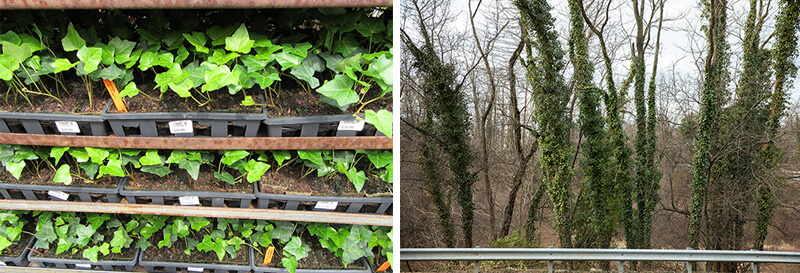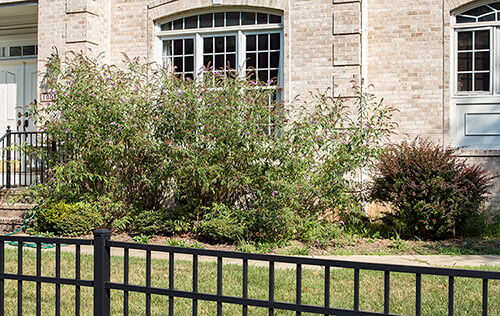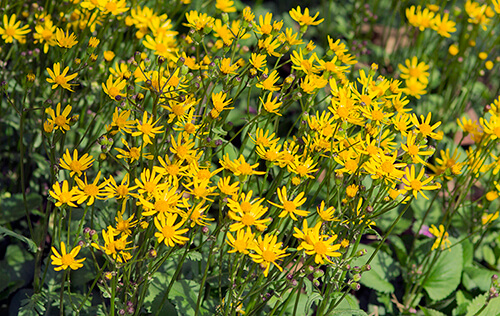DEATH BY URBAN LANDSCAPING: HOW POPULAR LANDSCAPE PLANTS ARE DESTROYING LOCAL FORESTS
by Beverley Rivera

Chinese wisteria (Wisteria sinensis) can displace native vegetation
and kill trees and shrubs by girdling them.
Photo by Matt Jones/NatureServe/CC.
And it’s a problem without a solution because many of the plants that are steadily destroying Virginia’s forests are spreading from people’s gardens and from landscaping at shopping centers and businesses. There are breathtaking areas in Northern Virginia where invasive vines so thick that they require a saw to hack through are suffocating native trees that withstood Civil War battles. Homeowners and landscapers plant these vines in urban settings, the seeds get into the forest via birds, and the non-native plants quickly take over, entangling, suffocating, stunting and displacing everything natural. Invasives such as Chinese wisteria send out vast networks of thick vines that spread above and beneath the ground, quickly engulfing massive areas of natural forest.
Another frightening prospect is that in the normal cycle of things, young trees which are just now getting established would, hundreds of years from now, replace the massive canopy trees as they end their life cycles. If left untainted, the forest rejuvenates itself as it has for thousands of years. But with invasive plants taking over, the young growth that is destined to be our forest of the future is being entangled, smothered and displaced by invasive plants. Adding to the problem is overbrowsing by deer. Deer won’t eat many of the invasive plants, and the natural predators that once kept deer numbers in check are no longer roaming the east.

There’s a native plant for every gardening situation

adorn many residential properties.
But don’t expect the large local garden centers, or the plant sales that crop up in shopping center parking lots to stock an abundance of native plants – because they don’t. They might stock a few cultivars, which are plants that have been bred to enhance particular traits such as vibrant color or hardiness, so they may be labelled “native” but they contain modifications. Another caveat about native plants is obtaining plants that belong in this region, they’re referred to as “local ecotypes.” Just because a plant is “native” to Northern America – which is vast in its geography and hence its plant diversity – doesn’t mean that it belongs in Virginia, or that it couldn’t potentially become invasive if introduced to this region. Our local ecotypes also have evolved to form special relationships with our indigenous animals. Some native bees, for example, pollinate only one species of plants, which required millions of years of evolution.

Northern Virginia resources abound!
Fortunately, there are some excellent resources available for planting what is local. The Plant NoVA Natives website has recommendations of what to plant specific to Northern Virginia, and their online guide even covers recommendations for problem planting areas. The Virginia Native Plant Society also has a wealth of resources including a list of alternatives for English ivy. One excellent source for buying local ecotypes is Earth Sangha’s Wild Plant Nursery.
One last word of caution when buying plants at big box stores or mainstream garden supply shops is that there is much talk about whether the presence of certain pesticides known as neonicotinoids are contributing to the alarming decline of pollinators. Shop wisely and with an eye to the future.
Virginia has a wealth of gorgeous natural areas that are being devastated by the invasive plants that we are cultivating in our own backyard. Help to preserve the fascinating diversity of this region’s native plants by growing what belongs here.
